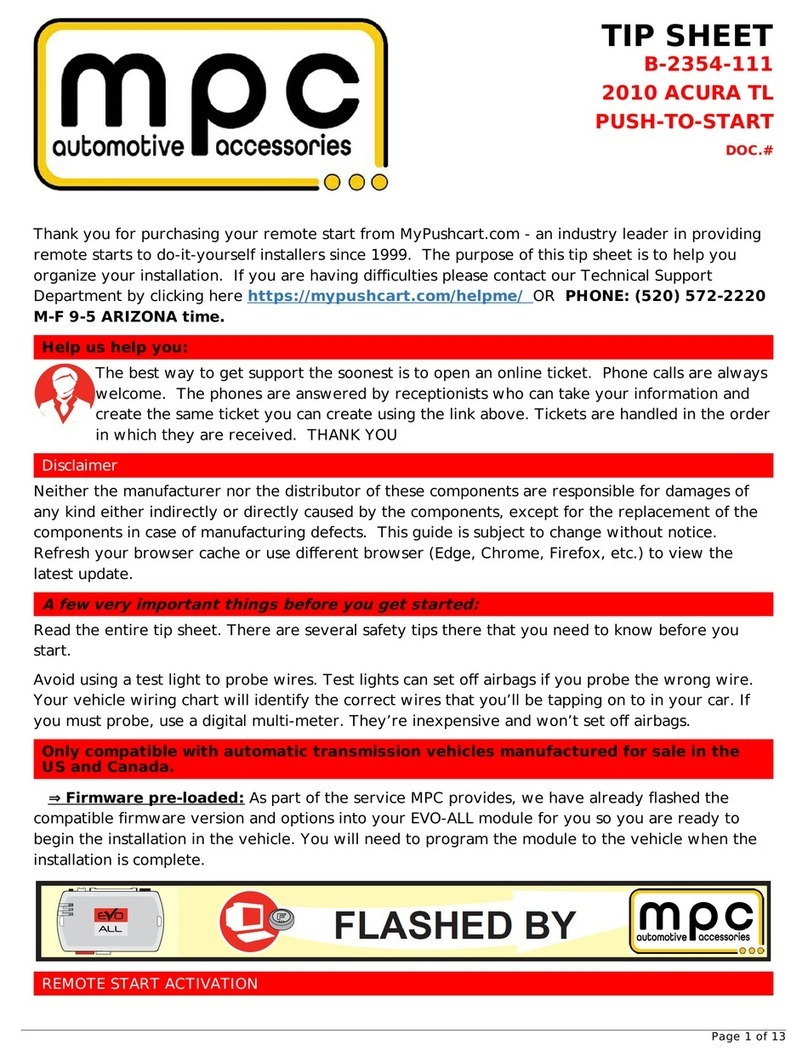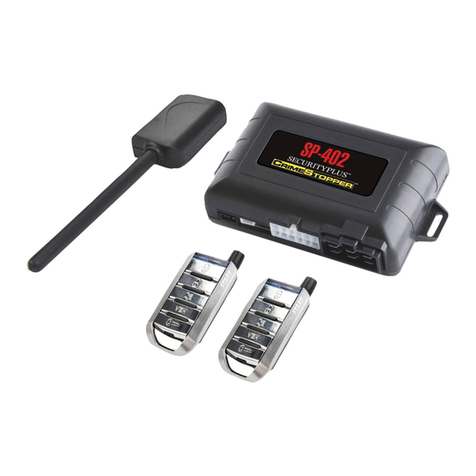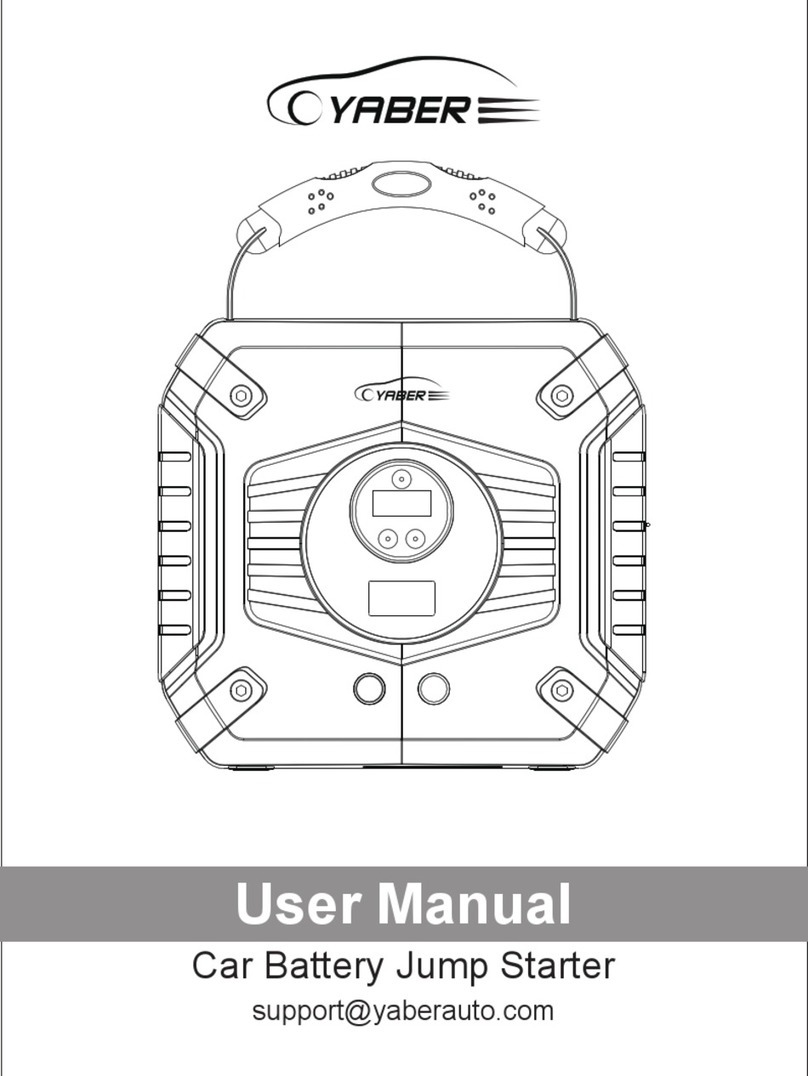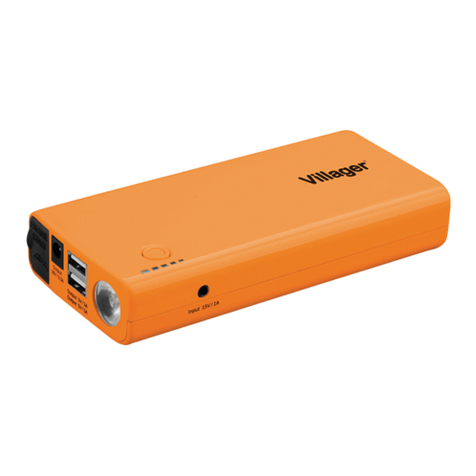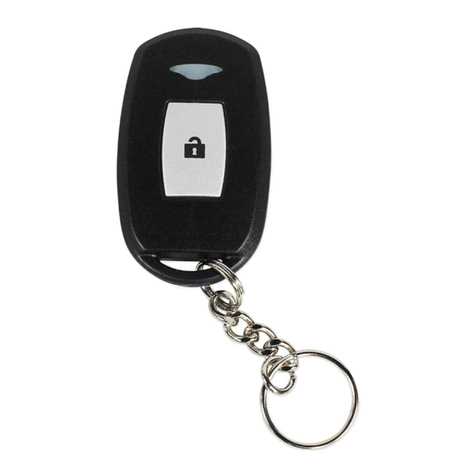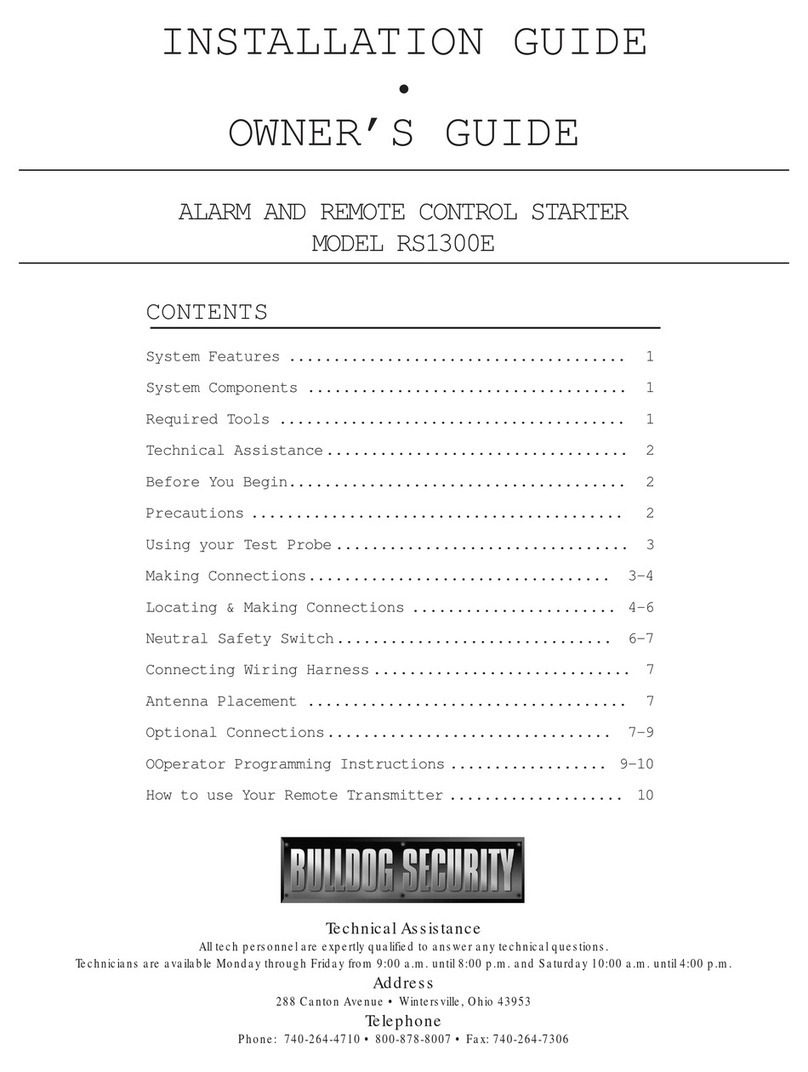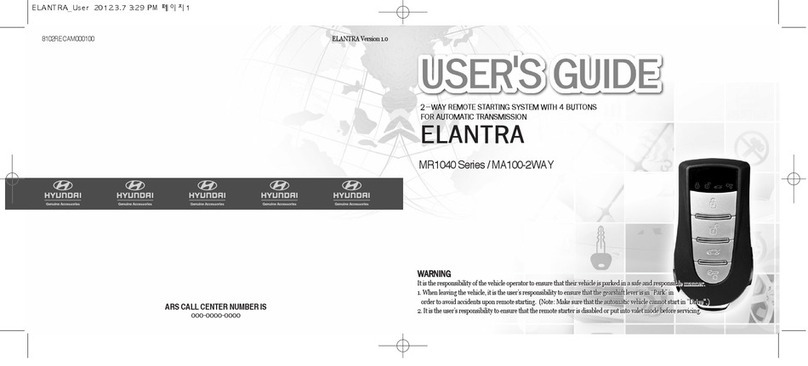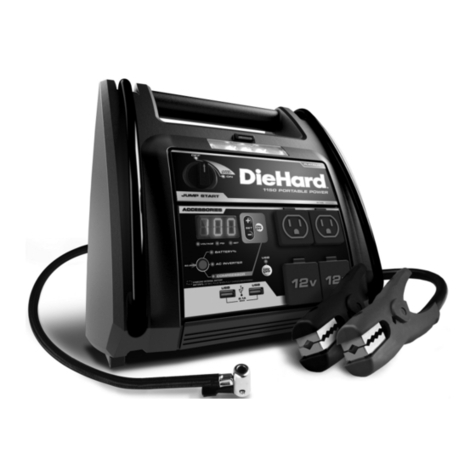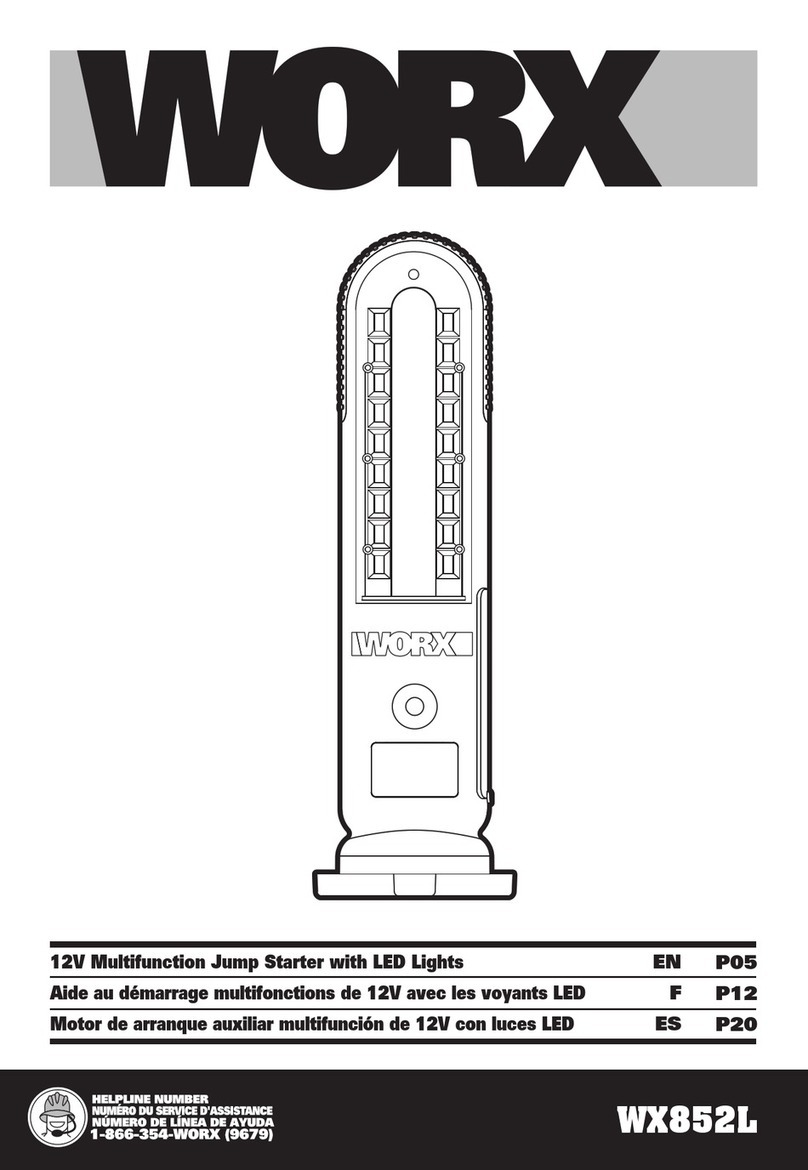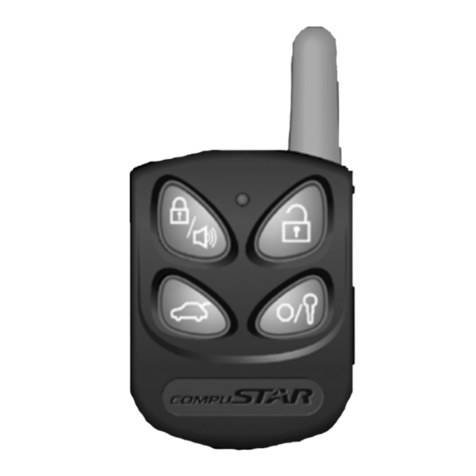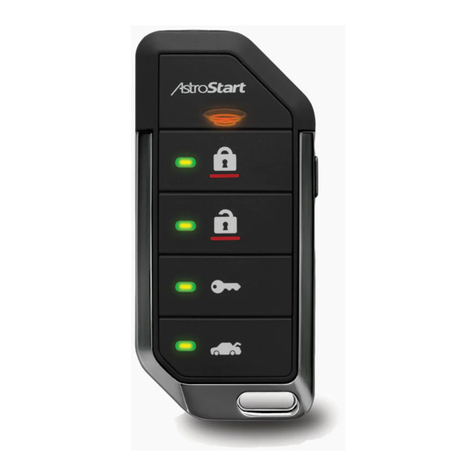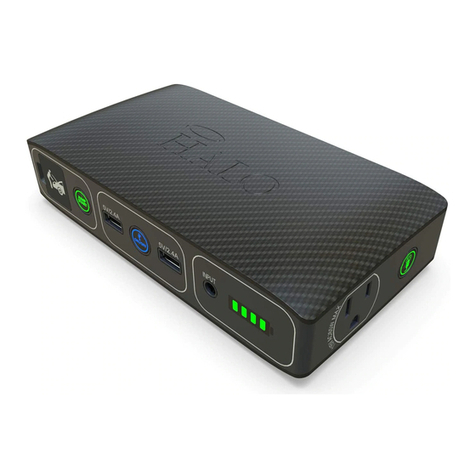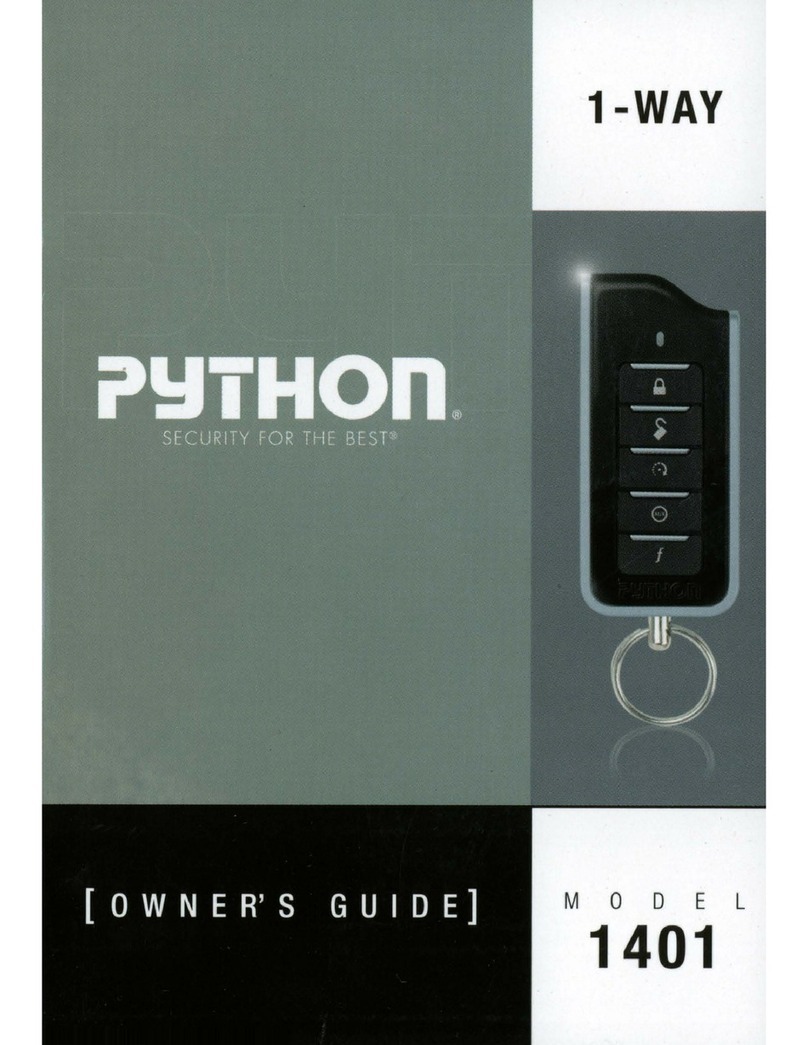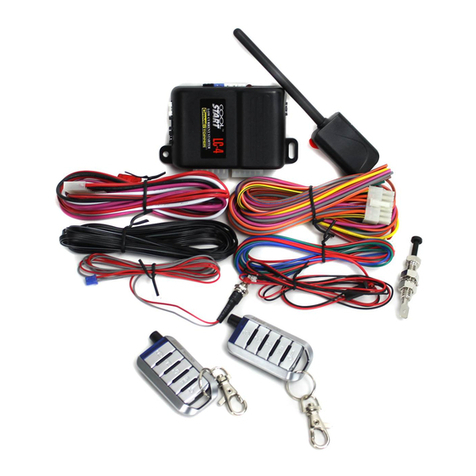MPC ProStart PS4 Assembly instructions

Remote Start Kit for GM Trucks & SUV’s - Installation “Tip Sheet”
rev 1.3 1/12/2013
Thank you for purchasing your remote start from MyPushcart.com - an industry leader in providing
remote starts to do-it-yourself installers since 1 . We’ve put this tip sheet together to help you with
your installation. The purpose of this sheet is to help you organize your installation - not to replace
your installation manuals. You will still need to refer to those.
T o very important things before you get started:
• Read the entire installation manual. There are several safety tips in there that you need to know
before you start
• Avoid using a test light to probe wires. Test lights can set off air bags and damage ECU’s if you
probe the wrong wire. Your vehicle wiring chart will identify the correct wires that you’ll be
tapping on to in your car. If you must probe, use a digital multi-meter. They’re inexpensive and
won’t set off air bags or burn circuit boards.
• Test, and re-test all the wires you are connecting to in your vehicle before you connect them.
Sometimes wire color may change or be slightly different than what is shown on the chart.
Don’t assume the chart is correct.
Your Kit Includes
1. ProStart PS4 remote car starter
2. idatalink ADS-DL bypass/interface module. The module has been pre-loaded with the correct
software for your vehicle
3. idatalink ADS-RNG-3 transponder ring
Overview
There are 5 basic steps to this remote start installation. We’re going to address each of these:
1. Install your accessories
2. Make your wiring connections for the remote start
3. Program the remote start and bypass
4. Test the system
5. Button it up!

When you open your package, you will see lots of wires. Don’t panic – you will not be using most of
them. Basic installation of this kit usually requires only 5 wiring connections in to the vehicle. We will
detail those for you later.
If you provided us with your vehicle model/year information, your package will also include a wiring
chart for your vehicle. This chart identifies the color and location of various wires that are normally
used for remote start installation. THE ONLY INFORMATION YOU WILL NEED FROM THIS CHART IS THE
COLOR/LOCATION OF YOUR 12-VOLT POWER SOURCE AND THE COLOR/LOCATION OF THE BRAKE
SWITCH WIRE. All the other connections are either not needed or will be detailed later in a more clear
and easy to understand manner.
If you did not provide us with your vehicle information and need the wiring chart, email us at
[email protected]. Be sure to include the model/year of your vehicle, your name and your sales
order number.
Step 1: Install Your Accessories
Your kit includes an antenna, a programming switch, a hood pin and a status LED.
• Programming Switch – required and must be installed
• Antenna – required and must be installed
• Hood Pin - An important safety component! This is what prevents the car from starting
when the hood is open. If your vehicle is equipped with a factory hood pin, the OFA module
included with your kit will read it, so installation of the aftermarket hood pin is not required.
If your vehicle does not have a factory hood pin, we strongly recommend you install the one
included with the kit.
• Status LED - Not required for normal operation but can be helpful for troubleshooting.
Need to know where all the components go? See Installer’s Tip #1 on page 6.
Step 2 – Wiring
Below is a detailed list of all the wiring connections you’ll need to make. Note that some connections
are made in to the vehicle and others are made between the bypass module and the remote start
module.
When you’re done, you will have lots of unused wires. You can tie them up and secure them, or you
can cut them short. On the bypass module, you can pop the unused wires out of the plugs altogether
by pushing down on the metal contacts on the plug with a pointy tool (a paper clip actually works well)
and pulling on the wire. Whatever you choose, wait until your installation is completed, programmed
and tested before you tie up, cut or remove any wires!

Where to find the wires in the vehicle
Find your vehicle on the Wire Cross Reference Chart that begins on Page 5 of the ADS-DL bypass
installation manual (at the end of this document). The chart will show you the color and location of the
vehicle wires you’ll need to use. We’ll be using the “Type 2” installation.
Below is a sample of a typical vehicle and a diagram that shows where the connections are made.

Re ote Start 6-Pin Harness:
• Red (2) - connect to Constant +12v The wire color and location information is on your vehicle
wiring chart – NOT in the ADS-DL manual. When tested, this wire will show +12 volts whether
the vehicle’s ignition is on or off.
• Pink – connect to Pin 1 at the vehicle’s Main Ignition Harness Connector. When tested, this
wire will show +12 volts only with the key in the ON position
• Grey – connect to Pin 3 at the vehicle’s Main Ignition Harness Connector. When tested, this
wire will show +12 volts only with the key in the ON position
Re ote Start 12-Pin Harness
• Black to Ground
• Purple – connect to vehicle Brake Switch wire. When tested, this wire will show +12 volts only
when the brake pedal is being pressed. Wire color and location information is on your vehicle
wiring chart.
Bypass 3-Pin Connector w/Yellow wires
• Yellow wire - connect to Pin 5 at the Main Ignition Harness Connector. There is no test for this
wire.
Bypass 7-Pin Connector (white plug)
• Orange – connect to Pin #1 on ODB2 Connector (under driver’s dash). There is no test for this
wire.
• Pink – connect to remote start’s pink wire in 6-pin connector
• Orange/Black to ground
Bypass 9-Pin Connector (black plug)
• Black/white - connect to remote start’s grey wire in 6-pin connector
Need tips on how to make the wiring connections? See Installer’s Tip #2 on page 6

Step 3 – Finishing the Bypass Installation and Progra ing
1. Prior to plugging in the bypass, change the remote start’s programming option #5 to “ADS-
idatalink OFA Series” (instructions for Options Programming are on page 15 of remote start
manual)
2. Change the remote start’s programming option #1 to “tach”
3. Install the transponder ring around the ignition switch. Wrap the loop around the ignition
switch 6 times.
4. Connect the bypass to the remote start using the black 4-pin data cable. Be sure to use the
“OFA” data port on the remote start.
5. When all the wiring is completed, the bypass and the transponder need to be programmed.
See pages 14 & 15 in the GM3 Install Guide.
Step 4 – Test the Syste
Once your bypass and transponder programming has been completed, the system should be fully
operational. Here are the tests you should perform prior to closing up the installation:
Test the ‘lock’ and ‘unlock’ functions on the remote controls
Remote start the vehicle by holding the ‘start’ button for 2 seconds
While the vehicle is running on the remote start, press the brake pedal – this should shut the engine
down.
Open your hood and try to remote start the vehicle. If you have a factory hood pin or if you have
installed the aftermarket hood pin, the remote start should NOT work.
Close the hood and remote start the vehicle again. With the vehicle running, press the ‘start’ button on
the remote again. The engine should shut down.
Remote start the vehicle one more time. With the engine running, unlock your doors, get in, put the
key in the ignition and turn it to the ‘on’ position. At this point the vehicle should be able to be driven
and operate normally.
Activating the re ote start with your OEM re ote
Your remote start system can also be activated using your OEM remote fobs. You will need to make
one more wiring connection in to the vehicle, add a relay (included with your kit) and make one
programming charge to the remote start. If you do this, wait until the rest of the system is wired,
programmed and tested.

1. Locate the vehicle’s ‘Motor Lock’ wire. This is the wire that goes directly to the door lock
motor. In most GM vehicles it is a gray wire in the driver’s kick panel that runs in to the door
boot.
2. Connect the relay as follows: Pin 30 to the green wire in the remote start 3-pin harness (the one
with the red plug). Pin 85 to the motor lock wire in the vehicle, Pins 86 & 87 to ground. 87a is
not used.
3. Change your remote start’s programming option #17 to ‘3 pulse’. Option programming
instructions are on page 15 of the remote start manual.
Once these steps are completed, you can start the vehicle by pressing ‘lock’ on your OEM remote three
times is rapid succession.
Step 5 – Close it up!
Gather up all your wiring and neatly bundle it together using zip ties or electrical tape. Find a secure
place to put the remote start module and use zip ties to secure it. If you’re going to trim or remove any
unused wires, now is the time. Make sure that the re ote start wires are not near any oving parts
on the steering wheel, pedals or e ergency brake!
Installer’s Tips
Tip #1 – Where Everything Goes
1. Remote start module – the wiring for the module is done under the dash on the driver’s side, so
you’ll want to install the module in that general area. Before you start wiring, look for a
location where there’s some open space that will fit the module. Pay attention to moving parts
like the pedals, e-brake and steering column. Be sure to route your wiring away from those
areas.
2. OFA Bypass module – can be stowed along with the remote start.
3. Programming button – Requires a ¼” hole. Usually put in the driver’s kick panel (that’s the area
forward of the door), the driver’s side of the center console, or the underside of the dash.
4. Hood Pin Switch – An important safety component! Requires a 3/8” hole. Find a location in
the engine compartment to mount the switch where the closed hood will keep the plunger in
the switch depressed. This is what prevents the car from starting when the hood is open. If
your vehicle is equipped with a factory hood pin, the OFA module will read it, so installation of
the aftermarket hood pin is not required.
5. Status LED – Not required for normal operation but can be helpful for troubleshooting. Can be
mounted anywhere you like – or unplugged and not used once the installation is completed.

6. Antenna – Mount to the inside of the windshield near the top or near the pillar. The higher it is
mounted, the better the operating range of your system. To further improve performance,
mount the antenna at least 1” away from metal. Route the cable under the headliner, under
the interior trim on the windshield pillar and behind the trim at the end of the dash.
Tip #2 – How to ake your wiring connections
t’s very important that all your wiring connections be solid and secure. All remote start connections are
“tap on” connections. This means that you do not need to cut the wires in the car. You simply need to
“tap on” to the wires in the car to make your connections. Here are three different ways to do this:
Method 1 – Solder and tape
This is the method preferred by the best professional installers. It makes for the most reliable
connections, but it is also the most difficult to do. Sometimes there isn’t enough room in the wiring
harness to safely solder a wire without damaging adjacent wires, but if you have the soldering skills, go
for it. To make a connection, strip back a section of the insulation on the wire in the car. On heavy
gauge wires, 1” is about the right amount. On lighter gauge wires, ½” is fine. Strip 1” of insulation off
the end of the remote start wire. Tin the bare section of wire in the car. Wrap the remote start wire
around the tinned section and then carefully solder it in place. Wrap the splice tightly with electrical
tape.
Method 2 – Wrap and tape
This is the most popular method and is also very reliable. Strip back a section of the insulation on the
wire in the car. On heavy gauge wires, 1” is about the right amount. On lighter gauge wires, ½” is fine.
Strip 1” of insulation off the end of the remote start wire. Separate the strands of the wire like this:

Pass the wire from the remote through the opening as shown below
Wrap the remote start wire around both sides of the car wire, then back around itself as shown below
Use electrical tape to wrap the connection and secure the wires together. A wire tie will help prevent
the tape from unraveling in the future.
Method #3 – “T-Taps”
T-taps are plastic clips that are squeezed onto the wires in the car. The wire from the remote start
goes into the tap and the whole thing is crimped together. T-taps come in different sizes for different
size wires. Use yellow t-taps for the larger wires in your main power harness. Red t-taps are good for
the smaller wires. Tape and wire tie the connections as shown in the “wrap and tape” section above –
that will prevent the t-taps from ever opening up.
We now have a “tap kit” available for purchase for those who prefer to use this method. The kit consists
of two types of connectors - The taps and insulated male spade connectors that plug into them. The
taps attach to the wires in the car and the spade connectors attach to the wires on the remote start.
The spades then plug in to the taps. A crimping tool is required.

Did you find this docu ent helpful? Please let us know so we can
continue to i prove our service to you. Suggestions are welco ed
and encouraged!
Please e ail to sales@ ypushcart.co
Copyright 2012 Digitel LLC
Table of contents
Other MPC Remote Starter manuals
